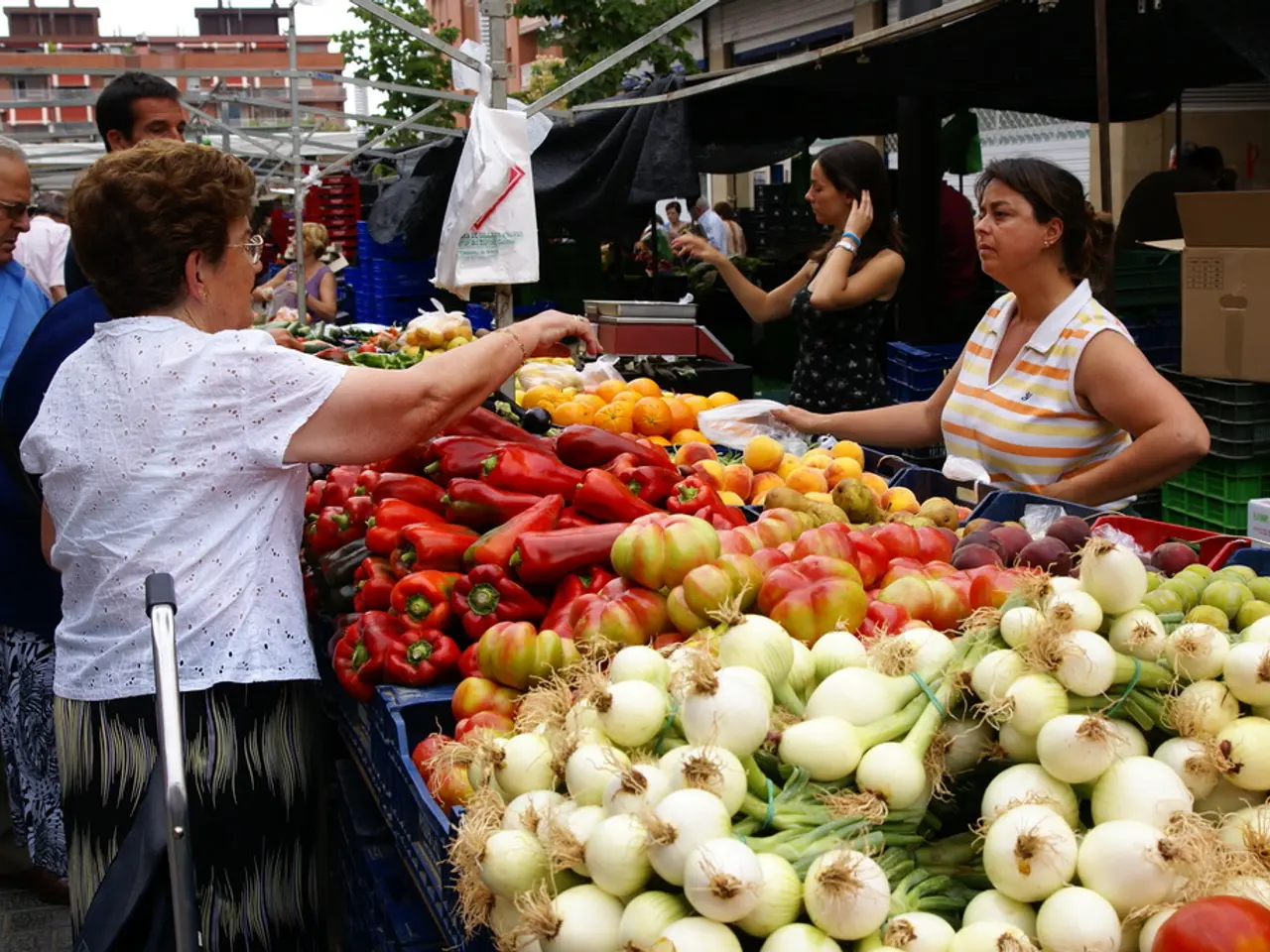Focus shifts towards enhanced efforts in plastic reduction, reuse, and recycling, following the breakdown of talks for a comprehensive plastic treaty. Progress on these fronts?
The global plastic recycling landscape is facing significant challenges, with recycling rates stagnating at around 8% and the majority of plastic waste ending up in landfills or being incinerated[1][2][3].
Inefficient Recycling Rates
Globally, only around 8-10% of plastics are recycled, leaving 75-80% of plastic waste with nowhere to go[1][2][3]. This inefficiency is due to a combination of technical limitations, sector differences, infrastructure gaps, and international policy challenges.
Technical Limitations
Mechanical recycling, the most common method, is effective mostly with PET and HDPE plastics. Other plastics like PVC, PP, and LDPE degrade in quality or damage equipment during recycling[1]. Moreover, mechanical recycling struggles to remove contaminants like inks, dyes, and additives, resulting in lower-quality recyclates with limited reuse markets and value[1].
Sector Differences
Packaging plastics have higher recycling rates (about 35% in the EU), whereas sectors like textiles have extremely low recycling rates (1.5% in the EU)[2].
Infrastructure and Data Gaps
Low-income countries often lack up-to-date and comprehensive waste management data and infrastructure, limiting their ability to improve recycling rates[3].
International Policy Challenges
The international nature of plastic production and waste trade complicates coordinated recycling efforts. Recent international negotiations on a global plastics treaty failed to reach consensus in 2025, delaying legally binding agreements that might improve recycling and reduce plastic pollution worldwide[4].
Environmental Footprint
Plastic production and waste management contribute significantly to greenhouse gas emissions, estimated at 10-13% of the global carbon budget by 2050[5].
Potential Solutions
Efforts to improve plastic recycling effectiveness focus on developing advanced recycling technologies beyond mechanical recycling (e.g., chemical recycling), strengthening collection and sorting systems, expanding recycling capacity especially in under-resourced regions, and pursuing binding international agreements to limit plastic production and pollution[1][4].
Alternatives to Plastic
Alternatives to plastic could be made from sustainable, less harmful materials such as seaweed. However, most solutions have not scaled up yet[6].
California is suing oil and gas giant Exxon Mobil over alleged deception about plastic recycling possibilities[7].
In summary, while pockets of success exist, global plastic recycling remains limited in scale and effectiveness due to technological, infrastructural, and international policy challenges. Substantial innovation, investment, and cooperation are required to substantially increase global recycling rates and reduce the environmental impacts of plastics[1][2][3][4].
References:
[1] Ellen MacArthur Foundation. (2016). The New Plastics Economy: Rethinking the future of plastics. Retrieved from https://www.ellenmacarthurfoundation.org/assets/downloads/publications/The-New-Plastics-Economy-Rethinking-the-future-of-plastics-full-report-05-16.pdf
[2] European Commission. (2020). EU plastic strategy. Retrieved from https://ec.europa.eu/environment/circular-economy/pdf/plastics_strategy_en.pdf
[3] World Bank. (2018). What a waste 2.0: A global snapshot of solid waste management to 2050. Retrieved from https://openknowledge.worldbank.org/handle/10986/31763
[4] United Nations Environment Programme. (2021). Progress towards a global plastic pollution treaty. Retrieved from https://wedocs.unep.org/bitstream/handle/20.500.11822/112709/MAR-2021_Progress-towards-a-global-plastic-pollution-treaty.pdf
[5] ScienceDirect. (2020). Plastic and Climate Change. Retrieved from https://www.sciencedirect.com/topics/earth-and-planetary-sciences/plastic-and-climate-change
[6] National Geographic. (2021). The search for plastic alternatives. Retrieved from https://www.nationalgeographic.org/environment/wildlife/plastic-pollution/plastic-alternatives/
[7] Los Angeles Times. (2021). California sues ExxonMobil over plastic pollution, alleging deception about recycling. Retrieved from https://www.latimes.com/california/story/2021-08-04/california-sues-exxonmobil-over-plastic-pollution-alleging-deception-about-recycling
- Seattle's health-and-wellness industry is piloting seaweed-based packaging solutions as alternatives to traditional plastics, adding to the global exploration of sustainable alternatives to plastic [6].
- The environment and climate change are closely intertwined with the climate-change effects of plastic production and waste management, posing an urgent concern for environmental-science research and policy in Bellevue and beyond [5].
- Progress towards a global plastic pollution treaty is crucial for addressing the international challenges of plastic waste management, as seen in recent United Nations Environment Program negotiations [4].
- Businesses in Seattle and across the globe should prioritize adopting recycling practices for plastic waste and invest in advanced recycling technologies, such as chemical recycling, to increase the effectiveness of their environmental initiatives.




